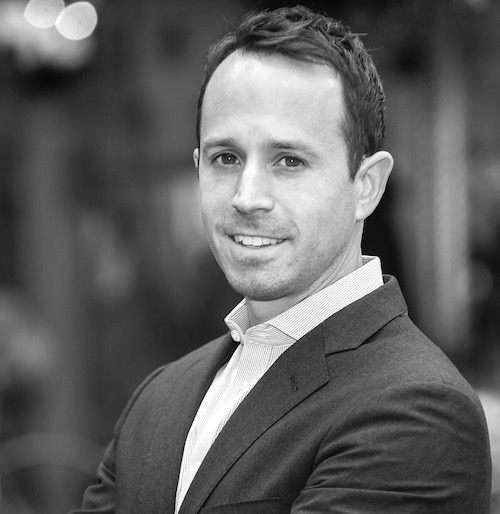Fitness IP Legal Expert: Protect, Build, Be Aware

Scott Sisun, Athletech News’s intellectual property (“IP”) law legal expert, outlines an IP checklist to ensure that your fitness business is well protected.
Scott Sisun is the founder of Sisun Law, an intellectual property law firm based in New York City. He is a former USPTO trademark examiner, amateur yogi, and three-time marathon…finisher. The fitness IP attorney has been identified as “one to watch” in the World Trademark Review 1000 list of Leading Trademark Professionals. Scott works closely with entrepreneurs, start-ups, mid-sized companies and large established entities in various industries, including the fitness and wellness space, to help them successfully reach their business and legal goals.
Additional Reporting by Morgan Berenbaum, Morgan is Sisun Law’s Spring Extern. When Morgan isn’t working out or studying, she bakes with enthusiasm.

A client enters your studio and they instantly recognize it as yours by the name and logo. They look around and see a unique color scheme and layout – the smiling employees are wearing matching outfits and shirts with logos. There might be distinctive color patterns on the walls. Consumers understand the quality of the services associated with the big brand on the window. Your clients are wearing leggings or t-shirts bought in your bricks-and-mortar retail shop or online store featuring your logo or unique artwork created by you. The equipment and accessories in the studio have a unique shape, design or invention that nobody else is offering. Your clients purchase a novel device for use in connection with workouts. You create a slogan and splash it on your mobile app, walls, and website. Your mobile app has recorded workouts. The list goes on and on. These are just some of the aspects of fitness and wellness studios that owners may want to consider when auditing their products and services for IP protection to maximize rights, monetize the value, and utilize those rights to enforce against others.
After you’ve developed any or all of the above, you launch and you’re confident nobody offers the “same” brands, designs, content or inventive offerings. However, did your attorney run any “clearance” on the brands? Did she/he advise on copyrights or patents before you launched your studio with all of that unique fitness IP? The flip side to holding yourself out to the world as an innovative brand owner, creator, and inventor, is that others may have arrived at those unique concepts first. In the US, trademark rights start at first use in commerce. Copyright rights begin at creation of the work. Utility patent rights run from the date of filing with the USPTO, and design patent rights run from the date of issuance from the USPTO.
So where to start: Create a fitness IP checklist. Look around your studio, your online store, your website, your app, your storefront, your advertising, your merchandise, your social media, and identify the aspects of the company, including logos, wording, slogans, inventions, artwork, recordings, choreography, devices, concepts, layouts, clothing prints, accessories, gear, brochures, posters, pictures, content, and anything else created by you. IP attorneys can also help by offering “IP audits” of your company. The benefit to an audit is identifying potentially infringing items before you launch and/or identifying items worth registering and enforcing. For example, a catchy slogan at your website inviting consumers to join might be a competitor’s main brand for a certain fitness concept, or a new gym stationary bicycle concept you are offering may have elements already patent-protected by a third-party. Having an IP checklist and going over it with an IP attorney might help you not only to protect and monetize, but also to avoid receiving a cease and desist letter or potential infringement actions in the future.
Here are some of the IP basics to be aware of with some USPTO images to distract you. Specifically, the three main fitness IP protections that you might consider when creating your checklist are trademark, patent and copyright protection.
A trademark is a word, phrase, symbol, or design or a combination of those elements that helps consumers to identify and distinguish the source of the goods or services. For example, a distinctive trademark allows a fitness brand owner to offer a consumer a product that he/she can rely on and trust, and that distinguishes the owner from others in a same or similar industry. The more distinctive the mark, the more it can stand out. Take Barry’s Bootcamp and Soulcycle, for example. Barry’s Bootcamp implements not only the BARRY’S BOOTCAMP wording, but also a chevron design that helps it stand out in a field of fitness studios. See Figure 1. Similarly, SOULCYCLE utilizes the stylized spoke design so that customers can distinguish the source of the quality services they’re receiving. See Figure 2.
Trademark rights can be unlimited provided there is continuous use and renewal every ten years (with a first filing between the 5-6th year). There are also other components to a renewable trademark, including proper enforcement and monitoring to avoid genericness, abuse, and dilution. In other words, you can maintain your trademark forever provided you take the necessary steps to maintain use and goodwill in the mark.
Design Patent protection extends to unique ornamental designs. Utility patent protection extends to inventions covering a process, machine, manufacture, or composition of matter, or improvements thereof. A utility patent lasts for 20 years whereas a design patent lasts for 15 years. Neither have an option to renew. Figures 3 and 4 are some examples of utility patents registered with the USPTO.
Copyright covers the original works of authorship. Think choreography, photos, architectural drawings, videos, brochures, nutrition guides, manuals – each may have elements of copyright protection. We Flow Hard: The Y7 Guide to Crafting Your Yoga Practice obtained copyright protection in the written work. Some authors have not been so lucky, including attempts to register a sequence of Bikram poses. Copyrights are registrable individually or as part of a group. Copyright can last for the life of the author plus 70 years; for a work made for hire or a company, the copyright can last for 95 years from the year of its first publication or a term of 120 years from the year of its creation, whichever is shorter.
Once you’ve addressed the protections and the possible risks, you should consider seeking registration with US or international offices, monitoring and enforcing your rights. We like to say that you want to build a moat around your IP. Don’t let others get too close to what you’ve invested your time, sweat and money into.
In summary, before you open your doors, try warming up with an IP audit, IP clearance, a talk with your IP lawyer, and registration where possible. Remember to then focus on monitoring, enforcing and monetizing your IP.
If you want more information about protecting your IP, you may reach out to Scott at [email protected] or visit his firm’s site at Sisun Law.



